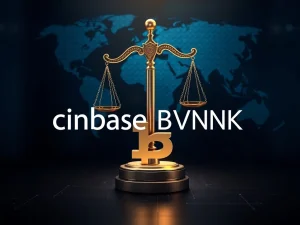BlackRock BUIDL Unlocks Strategic Opportunity for Crypto Platforms

Major cryptocurrency platforms are increasingly integrating traditional financial assets in tokenized form. A significant recent development involves BlackRock’s tokenized US Treasury fund, BUIDL. Its acceptance as collateral marks a notable step in bridging traditional finance and the crypto world.
The Significance of BlackRock BUIDL as Crypto Collateral
Leading crypto derivatives exchange Deribit and prominent spot exchange Crypto.com have announced they will accept BlackRock’s Institutional Digital Liquidity Fund (BUIDL) as trading collateral. This option is currently available for institutional and experienced clients. The core benefit is clear: by using a low-volatility, yield-bearing asset like tokenized US Treasuries, traders can potentially lower their margin requirements for leveraged trading. This is due to the inherent stability of the underlying US government debt compared to more volatile crypto assets.
How Tokenized Treasuries Reshape Trading
The integration of assets like BlackRock BUIDL reflects a growing trend. Tokenized US Treasury products are gaining traction as an alternative to traditional stablecoins, primarily because they offer a yield derived from the underlying government securities. The market for tokenized treasuries is expanding, demonstrating the increasing utility and acceptance of real-world assets on the blockchain. BlackRock’s BUIDL fund holds a significant share of this market, representing billions in value.
Beyond Deribit Crypto.com: Expanding BUIDL Utility
The acceptance of BlackRock BUIDL by platforms like Deribit and Crypto.com is part of a broader strategy. BlackRock has previously indicated plans to integrate BUIDL across various crypto platforms. Beyond centralized exchanges, decentralized finance (DeFi) protocols are also exploring BUIDL integration. For instance, the community behind the Frax Finance protocol voted to add BUIDL as backing for its frxUSD stablecoin. Proponents see benefits like deeper liquidity, improved transfer options, and reduced counterparty risk due to BlackRock’s standing as a global asset manager.
The Landscape of RWA Tokenization and Its Challenges
The growth of tokenized treasuries falls under the umbrella of RWA tokenization. This sector is experiencing rapid development, primarily on networks like Ethereum, which currently hosts the majority of tokenized government securities. While the potential benefits of bringing RWAs onchain are significant, including increased efficiency and accessibility, challenges remain. Centralization concerns are frequently raised, particularly as a small number of firms currently dominate the tokenized US treasury market. Industry participants also discuss potential structural financial risks associated with these new instruments.
Summary: A New Era for Crypto Collateral
The integration of BlackRock BUIDL as crypto collateral by major platforms like Deribit and Crypto.com signals a maturing market. It provides institutional traders with a stable, yield-bearing option for managing margin requirements. While the RWA tokenization space, including tokenized treasuries, faces challenges like centralization, its continued growth and adoption by both centralized and decentralized platforms highlight a significant convergence between traditional finance and the crypto ecosystem. This trend expands the potential uses of blockchain technology and reshapes how collateral is viewed in the digital asset space.







